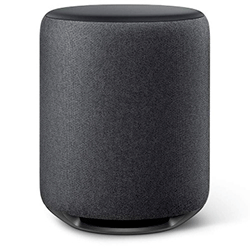 By reading this Sonos SUB review you'll see that Sonos has improved its home digital music system, working in a multi-room (multi-room) mode. Today, many companies produce such systems, but the Sonos solution is so convenient to use, possessing excellent quality characteristics that it can be confidently recommended even despite the high cost.
By reading this Sonos SUB review you'll see that Sonos has improved its home digital music system, working in a multi-room (multi-room) mode. Today, many companies produce such systems, but the Sonos solution is so convenient to use, possessing excellent quality characteristics that it can be confidently recommended even despite the high cost.
Review
Features
Concerning Sonos SUB specs its two Class D digital amplifiers matched with speakers and a subwoofer. Frequency range extends down to 25 Hz. No need to lay wires. No programming. Just press just one button, then follow the instructions on the screen of your controller (Controller) and the system will automatically adjust all the audio settings to precisely balance your SUB and the Sonos components working with it to create an unmistakably optimal sound in a particular room. At the center of the unit sit two oval, 6-inch drivers in a push-pull arrangement which setup Sonos says eliminates cabinet rattling.
Design and build
The Sonos Sub is not small bit of kit, nor is it light but it is very well-designed. Available in a black gloss finish with a white Sonos logo or a white gloss finish with a black Sonos logo, the Sonos Sub shimmers and shine as light hits it. The subwoofer is wireless and designed to work perfectly both horizontally and vertically, so you can install the SUB in the room wherever you want - you can even put it flat under the sofa. Two bass drivers installed towards each other allow you to convert all energy into music sounds - loud and clear, without vibration of the case and without loss. The Sub comes with rubber feet and can be placed upright or mounted on its side.

Connectivity
Connections are similarly sparse, just an Ethernet port and Sonos' proprietary wireless system; there's no LFE input, so the Sub is only usable with a Sonos system. You can connect the sub to any Sonos system (any but the Connect) with a built-in amp. The Sub is particularly handy for users of the Play systems since they don't offer a dedicated subwoofer out as the Connect: Amp does.
Pros and Cons
Pros
- Hi-Fi. Speakers sound better than the multi-room
- The Bright LED can be configured to turn on/off via the Sonos app
Cons
- The app is clunky and looks outdated
Common features
Product
Model
Brand
Reviews
General
Amplification type
Wireless
Detachable grilles
Enclosure type
Power
Nominal output power (RMS), W
Maximal output power (RMS), W
Audio performance
Sensitivity, dB
Impedance, Ohm
Frequency response, Hz
Crossover frequency, Hz
Driver
Driver quantity
Driver size, in
Driver placement
Port placement
Connectivity
Wi-Fi
Bluetooth
Extensive connection
RCA LFE inputs
RCA stereo line level inputs (pair)
RCA outputs
XLR inputs (pair)
XLR outputs (pair)
Speaker level output (pair)
Speaker level input (pair)
Control
Volume
Subwoofer phase
Low-pass filter
Main power switch
App control
Desing
Body material
Woofer composition
Colors
User manual
Manual
Dimensions
Dimensions (W x H x D), cm/in
Weight, kg/pounds
Other
Release year





